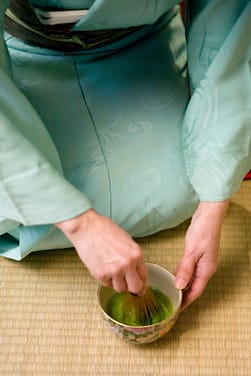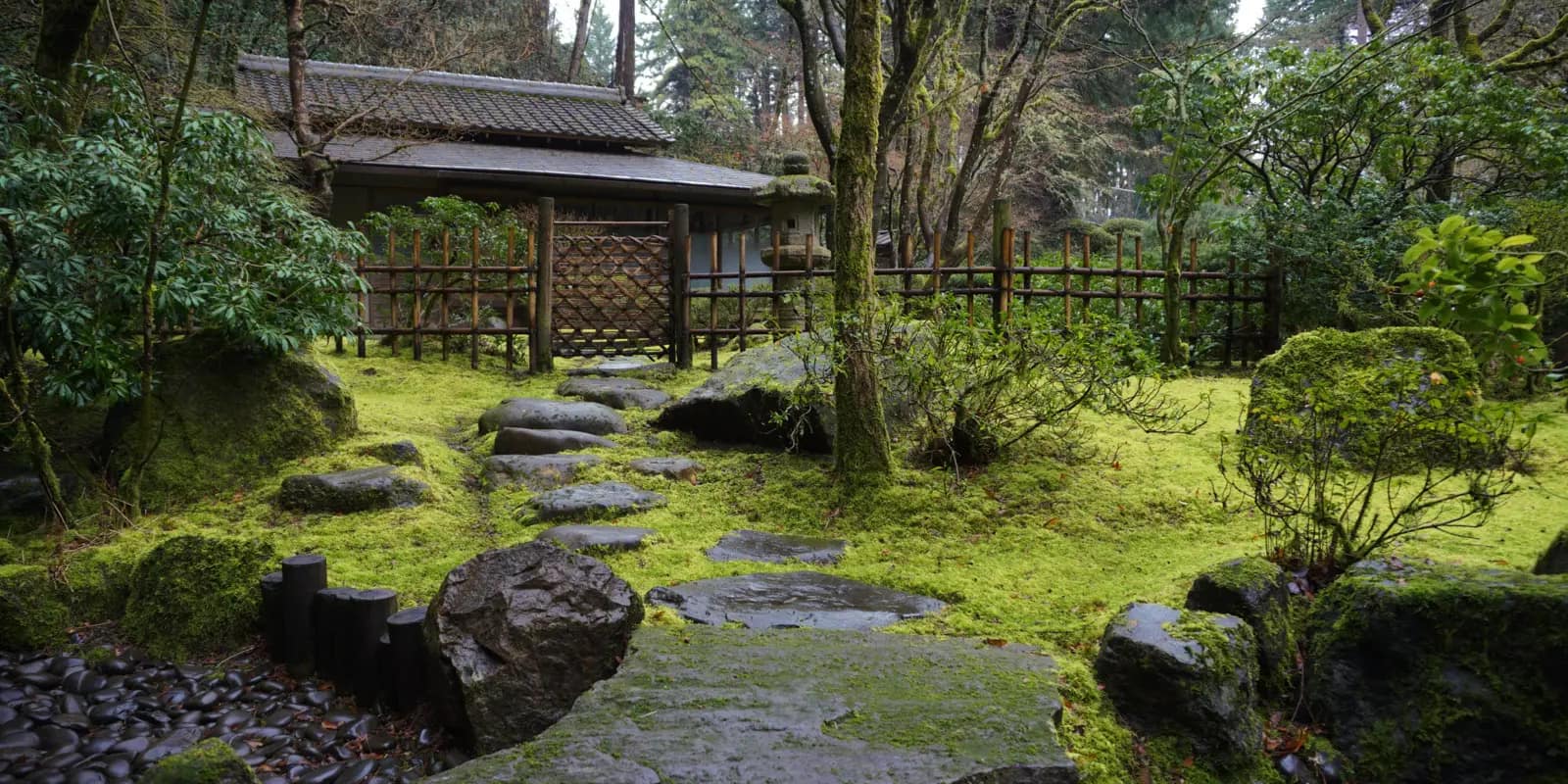
Look around Portland Japanese Garden and it seems that tea is everywhere – the tea ceremony demonstrations, the Hosokawa Morihiro Art in the Garden exhibition, and the tea garden itself. Why does the Garden focus so much on tea?
The culture of tea gives insight into not just the Garden but more broadly the Japanese view of nature. Humankind is an intrinsic part of nature, not separate from or in opposition to it. As Sōshitsu Sen XV said in Tea Life, Tea Mind, “Closing my eyes, I find green mountains and pure water within my own heart. Silently sitting alone and drinking tea, I feel these become a part of me.”
The practice of tea ceremony is referred to as chadō: the Way of Tea, telling us that tea is not just a drink: it’s an aesthetic, a spiritual practice, a mindset, a way of living. Tea offers a place of sanctuary from worldly concerns. The host and guest spend time over a bowl of matcha, with the host displaying deep consideration towards the guest, who responds in gratitude.
The tea garden itself represents the Way of Tea’s ideals of humbleness, austere beauty, and serenity. Passing through it on the way to the teahouse evokes feelings of traveling to a hermit’s retreat in a distant mountain landscape, away from worldly concerns. The irregular path leads the visitor to focus on each step while pausing to breathe in carefully-framed views of stone, moss, bamboo, and plants. Every element of tea ceremony reflects this understated, austere beauty.

The philosophy behind chadō:
The underlying philosophy of tea evolved from Zen Buddhism. Sen no Rikyu, the founder of the Urasenke school of Japanese tea ceremony, articulated the four principles of tea as the following:
Wa – 和 (Harmony)
At a tea gathering, harmony plays between host and guest, guest and guest, mood, and season. Sensitivity to the changing seasons, and harmony with these changes are part of the practice of tea.
Kei – 敬 (Respect)
Respect is extended not only to the other people with whom one interacts but also to one’s daily life, and even to inanimate objects such as tea utensils.

Sei – 清 (Purity)
Cleanliness and orderliness are important: entry to the teahouse is preceded by ritual cleansing at a stone basin and even cleaning floors is part of the process.
Jaku – 寂 (Tranquility)
A master reaches the highest level once she has put the ideals of wa, kei, and, sei into practice and begins to approach the utter stillness and silence of jaku.
As all the above show, the Way of Tea is a beautiful vehicle through which to learn about Japanese gardens. It also emulates the ideals and values the Garden wishes to share: beauty, the restorative power of nature, attention to detail, and consideration for one another.
